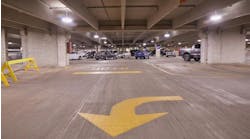Previously, we looked at what to do if a hazardous material splashes onto your skin or into your eyes. Another danger when there are hazardous chemicals on site, whether you work near them or not, is the possibility of inhaling hazardous substances. In some buildings, the inhalation danger is such that the building is designated a respirator area. In a paper mill, for example, you carry an emergency respirator if entering a building where sulphur dioxide is used.
Unfortunately, the inhalation hazard exists even outside designated respirator areas. You will know if you've inhaled sulphur dioxide, but that isn't the case with all inhalation hazards. Review the relevant MSDS.
If you did inhale, head away from the likely source as fast as possible. Once in fresh air, breathe deeply to help purge your lungs. But don't mistake this for solving the inhalation issues. You may feel better, experience no irritation, and not smell anything, but these facts actually mean very little. Get professional medical attention (not merely first aid) immediately.


